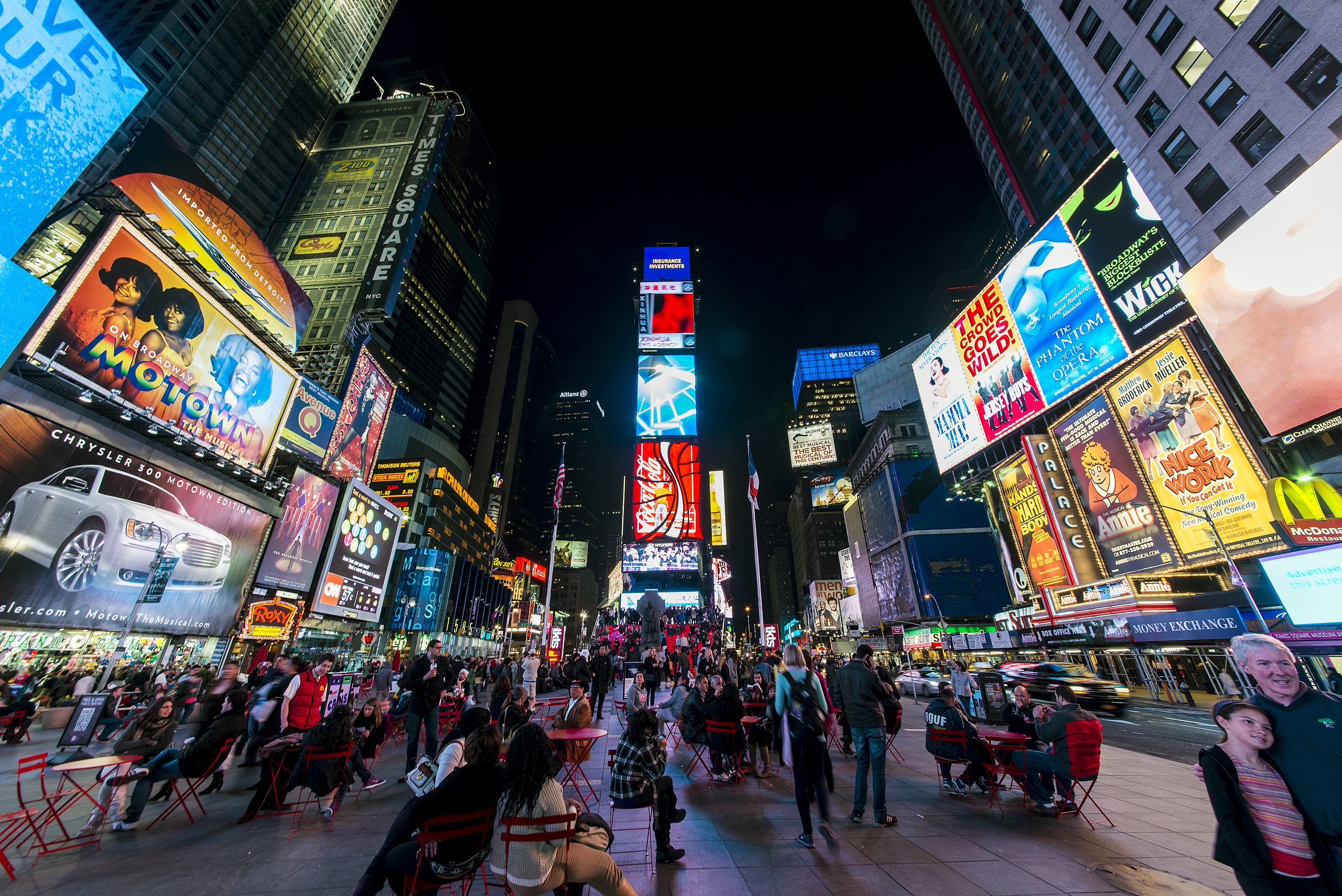Is Artificial Nighttime Lighting Too Much of a Good Thing?
Artificial nighttime lighting (ANL) has changed the way people live. We no longer need to shut down our daily activities when the Sun goes down. Not only has ANL increased our productivity and augmented our economy, it has reduced personal injuries and decreased crime.
ANL has seen rapid change in recent years. When I was a child incandescent bulbs accounted for all ANL. During my teenage years, mercury vapor lamps began to supplant incandescent bulbs for the simple reason that mercury vapor lamps delivered more lighting at a lower energy expenditure. Consequently, that transition dramatically increased ANL not only in Canada and the United States but all over the world.
Mercury vapor lighting emits predominantly at blue wavelengths. However, it’s now known that blue nighttime lighting suppresses melatonin.1 The suppression of melatonin (the hormone of darkness) disrupts sleep patterns in both humans and animals.
Low-pressure sodium lamps brought about the next big transition in ANL. These sodium lamps produce more light per unit of energy invested than mercury vapor lamps. Hence, they increased ANL.
Extent of LED Lighting
In a paper published in a recent issue of Science Advances, a team of five astrophysicists and environmentalists led by Alejandro Sánchez de Miguel produced the first composite ANL full-color maps of Europe using imagery obtained from the International Space Station (ISS). The ISS database of ANL images of Europe from 2003 to the present now exceeds 1.25 million images.
Sánchez de Miguel’s team pointed out just how dramatically LED (light-emitting diode) lights have increased ANL in Europe and likely around the world.2 LED lighting yields, by far, the most dramatic increase in lighting per unit of energy invested of any technological development over the past century. Figure 1 shows ANL in Madrid before the introduction of LED lighting (2012) compared to ANL after the beginning of LED lighting installation (2017). Figure 2 shows ANL in London before LED lighting (2012) and after the beginning of LED lighting installation (2020).

Credit: Sánchez de Miguel et al., Science Advances 8 (2022): id. eab16891.

Credit: Sánchez de Miguel et al., Science Advances 8 (2022): id. eab16891.
Though the differences in the before and after images shown in figures 1 and 2 are dramatic, the conversion to LED street lighting is not yet complete in Madrid and London. For the right-hand part of figure 1, just 56% of public street lighting was converted from sodium high- and low-pressure lamps to LED. For the right-hand part of figure 2, 51% of public street lighting was LED. Both Madrid and London and virtually all large European cities are committed to making 100% of public street lighting LED.
Conversion to LED street lighting illustrates what’s called Jevon’s paradox. This paradox states that increases in power efficiency in outdoor lighting combined with lower economic cost drive up the demand for more lighting. Hence, any efficiency gains in ANL are counteracted by increased consumption of ANL. Therefore, Europe and likely the rest of the world have witnessed an exponential increase in ANL.
Biological Consequences
Humans, animals, and plants are impacted in different ways by the intensity and color of ANL. Like mercury vapor lamps, LED lights emit strongly at blue wavelengths. Hence, LED nighttime lighting suppresses melatonin production in humans and vertebrate animals to an exponentially unprecedented degree.3 This suppression not only reduces the duration and quality of sleep, it disrupts circadian cycles and temporal organization in mammals, birds, reptiles, and plants. For birds and mammals, it disrupts the operation of nearly every internal organ. As I described in a previous article, a recent scientific study has established that sleep loss in humans substantially reduces acts of altruism.4
The flocking of moths to bright outdoor nighttime lights is an example of a phototaxic response. Moths are joined by many other insect species in their strong attraction to ANL and in their vigorous flying activity adjacent to ANL. Scientific studies have established that ANL alters the DNA-to-RNA ratios in insects.5 Other studies show that ANL has reduced insect populations.6 Thus, there is the real risk that LED ANL could soon cause catastrophic declines in some insect populations.
In an article I wrote two years ago, I described studies that had shown that nocturnal moonlight and phases of the moon regulate coral spawning. I also explained that the recent introduction of LED lighting at certain tropical beach resorts had caused the failure rate of spawning coral colonies to rise from 6–20% to 93–100%.7 Similar to the risk to insects, LED lighting adjacent to beaches could eradicate coral reefs near these beaches and all the marine life dependent upon them.
Bats comprise one-quarter of all mammal species. Several studies have demonstrated that ANL strongly disturbs the behavior of bats in foraging for food, disrupts their sociability and flight routes, and limits their ability to disperse seeds.8 Since nearly all bats are nocturnal, the expected increase in ANL during the next decade could decimate their population levels, possibly endanger many bat species, and exacerbate landscape recovery.
One of the most dramatic and noticeable impacts of ANL is the decreased visibility for humans and animals to see stars. Analysis of data from satellites established that in 2014 more than 80% of the world’s population and more than 99% of people living in the United States and Europe experience noticeably reduced ability to see stars.9 The installation of LED lighting in many major cities of the world has kept people living in those cities from being able to see any stars at all.
Many animal species depend on the visibility of stars for navigation.10 Migratory birds, itinerant seals, and even some insect species use the stars and/or the Milky Way for navigation.
For humans, not seeing the starry sky deadens our sense of nature’s wonder. It can stymie contemplation of our place and purpose in the universe. Psalm 19:1 and 97:6 state that the heavens declare the glory and righteousness of God. Some places are so light-polluted that the heavens are not declaring anything at all. It’s no coincidence that the rise in the number of people professing to be atheists, agnostics, and nones (no religious affiliation) correlates with the intensity and ubiquity of ANL.
Managing Resources Wisely
As noted earlier, the benefits of ANL can’t be denied. However, the exponential increase in ANL we’ve experienced over the past several years as a result of LED lighting installation has produced deleterious consequences for plants, animals, and humans that can no longer be denied or ignored.
As I explained previously, natural night lighting, namely light from the Moon, planets, and stars is optimally designed to benefit Earth’s life.11 Acknowledgment of this optimal design of night lighting may help the peoples of the world recognize that ANL is now upsetting God’s perfect design.
For people living in large cities, God’s glory and righteousness revealed in the heavens are barely noticeable to the unaided eye. However, telescopes are a lot more affordable today than they were before the availability of mercury vapor and LED outdoor lighting. I have consistently seen non-Christians drawn to acknowledge our Creator-God when they look through my telescope at galaxies, globular clusters, and nebulae. During the past few weeks, I have seen a similar response to people staring at the spectacular images taken by the James Webb Space Telescope.
In Genesis 1 God assigns to humanity the responsibility to manage Earth’s resources for the benefit of humans and of all other life on Earth. The benefits we gain from ANL do not require either their current intensity or ubiquity. It’s time to optimize ANL levels for the maximum benefit and health of humans, animals, and plants. Astronomers in particular, both professionals and amateurs, will be grateful.
Endnotes
- Thomas W. Davies et al., “Artificial Light Pollution: Are Shifting Spectral Signatures Changing the Balance of Species Interactions?” Global Change Biology 19, no. 5 (May 2013): 1417–23, doi:10.1111/gcb.12166; Travis Longcore et al., “Rapid Assessment of Lamp Spectrum to Quantify Ecological Effects of Light at Night,” Journal of Experimental Zoology A. Ecological and Integrative Physiology 329, nos. 8–9 (October 2018): 511–21, doi:10.1002/jez.2184.
- Alejandro Sánchez de Miguel et al., “Environmental Risks from Artificial Nighttime Lighting Widespread and Increasing across Europe,” Science Advances 8, no. 37 (September 14, 2022): id. eab16891, doi:10.1126/sciadv.abl6891.
- Maja Grubisic et al., “Light Pollution, Circadian Photoreception, and Melatonin in Vertebrates,” Sustainability 11, no. 22 (September 14, 2019): id. 6400, doi:10.3390/su11226400.
- Hugh Ross, “Sleep Loss and Altruism Decline,” Today’s New Reason to Believe (blog), Reasons to Believe, October 10, 2022, https://reasons.org/explore/blogs/todays-new-reason-to-believe/sleep-loss-and-altruisim-decline.
- D. Quintanilla-Ahumada et al., “Exposure to Artificial Light at Night (ALAN) Alters RNA:DNA Ratios in a Sandy Beach Coleopteran Insect,” Marine Pollution Bulletin 165 (April 2021): id. 112132, doi:10.1016/j.marpolbul.2021.112132.
- Judith L. Kühne et al., “Impact of Different Wavelengths of Artificial Light at Night on Phototaxis in Aquatic Insects,” Integrative & Comparative Biology 61, no. 3 (September 2021): 1182–90, doi:10.1093/icb/icab149.
- Hugh Ross, “Artificial Night Lighting May Cause Ecosystem Collapse,” Today’s New Reason to Believe (blog), Reasons to Believe, January 4, 2021, https://reasons.org/explore/blogs/todays-new-reason-to-believe/artificial-night-lighting-may-cause-ecosystem-collapse.
- Bo Luo et al., “Artificial Light Reduces Foraging Opportunities in Wild Least Horseshoe Bats,” Environmental Pollution 288 (November 1, 2019): id. 117765, doi:10.1016/j.envpol.2021.117765; Emma Louise Stone, Gareth Jones, and Stephen Harris, “Street Lighting Disturbs Commuting Bats,” Current Biology 19, no. 13 (July 2009): 1123–27, doi:10.1016/j.cub.2009.05.058; Daniel Lewanzik and Christian C. Voigt, “Artificial Light Puts Ecosystem Services of Frugivorous Bats at Risk,” Journal of Applied Ecology 51, no. 2 (April 2014): 388–94, doi:10.1111/1365-2664.12206; Alexis Laforge et al., “Reducing Light Pollution Improves Connectivity for Bats in Urban Landscapes,” Landscape Ecology 34 (April 15, 2019): 793–809, doi:10.1007/s10980-019-00803-0.
- Fabio Falchi et al., “The New World Atlas of Artificial Night Sky Brightness,” Science Advances 2, no. 6 (June 10, 2016): id. 1600377, doi:10.1126/sciadv.1600377.
- James J. Foster et al., “How Animals Follow the Stars,” Proceedings of the Royal Society B: Biological Sciences 285, no. 1871 (January 31, 2018): id. 20172322, doi:10.1098/rspb.2017.2322; Björn Mauck et al., “Harbour Seals (Phoca vitulina) Can Steer by the Stars,” Animal Cognition 11, no. 4 (October 2008): 715–18, doi:10.1007/s10071-008-0156-1; James J. Foster et al., “Stellar Performance: Mechanisms Underlying Milky Way Orientation in Dung Beetles,” Philosophical Transactions of the Royal Society B: Biological Sciences 372, no. 1717 (April 5, 2017): id. 20160079, doi:10.1098/rstb.2016.0079.
- Hugh Ross, “Lunar Designs Optimize Life for Both Predators and Prey,” Today’s New Reason to Believe (blog) Reasons to Believe, November 20, 2017, https://reasons.org/explore/blogs/todays-new-reason-to-believe/lunar-designs-optimize-life-for-both-predators-and-prey.






